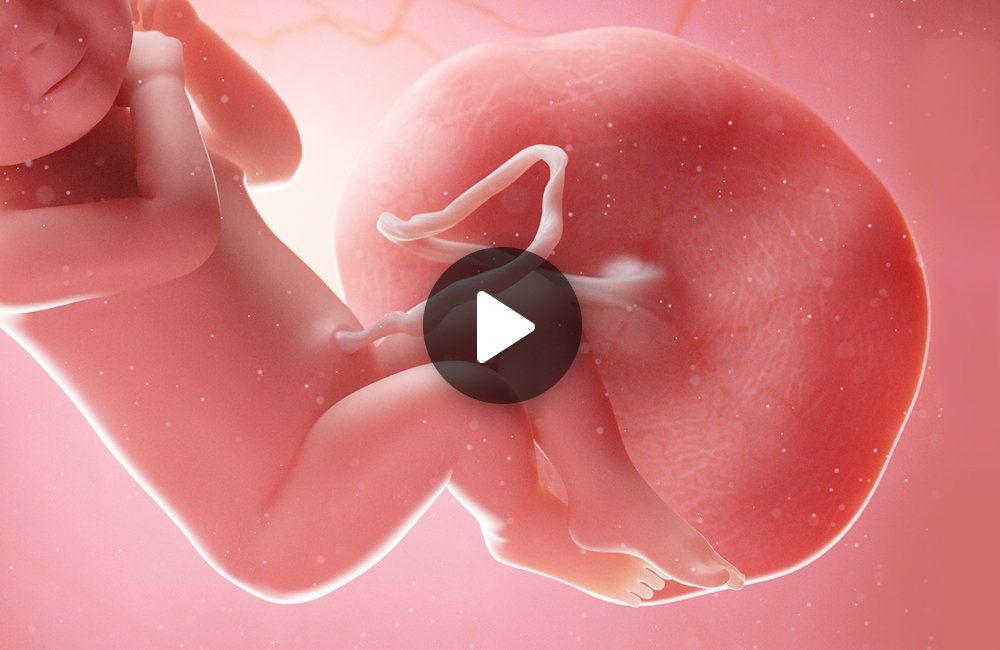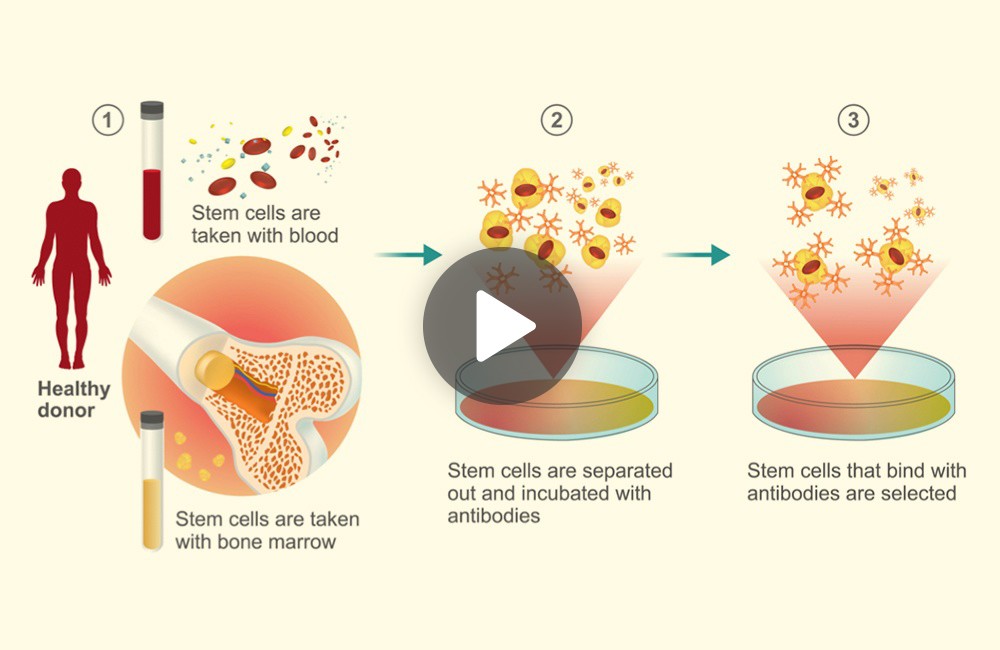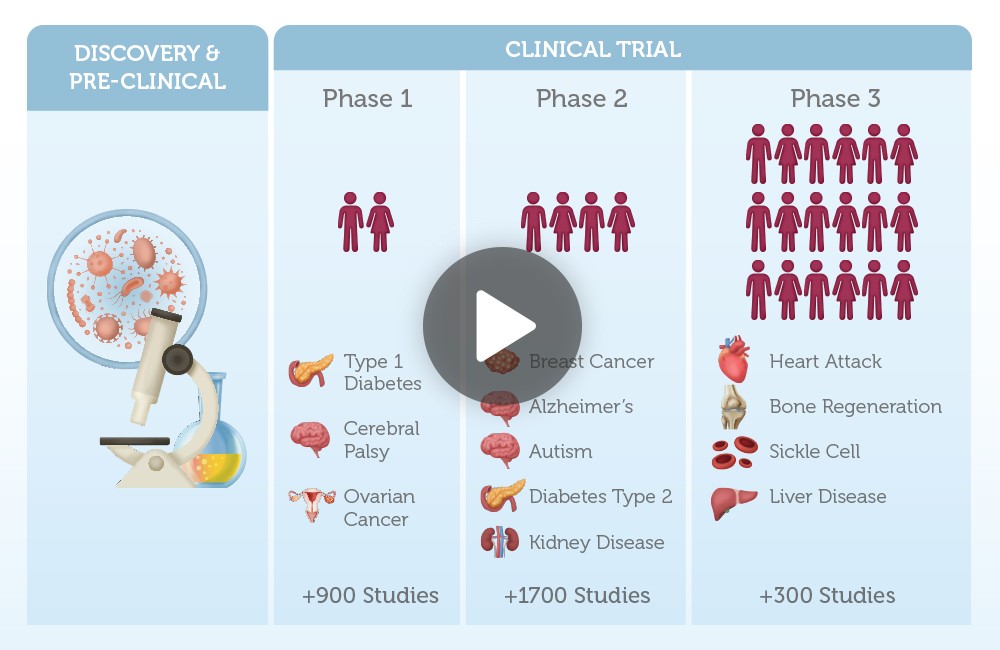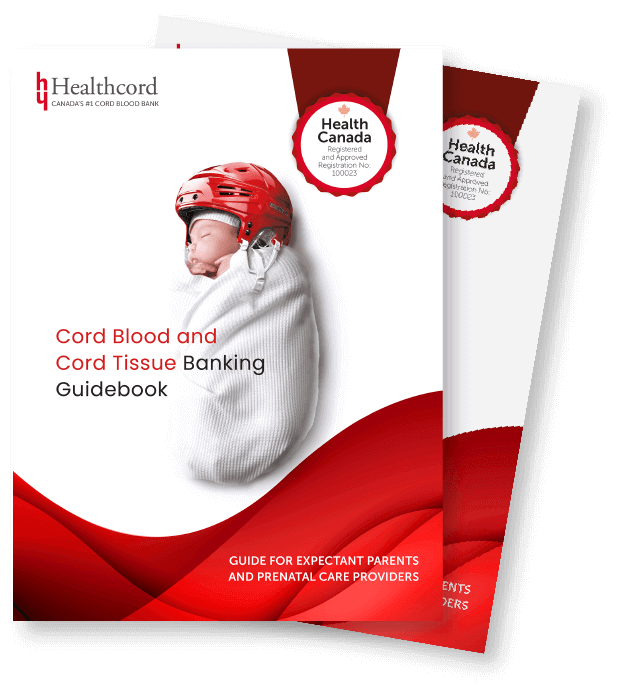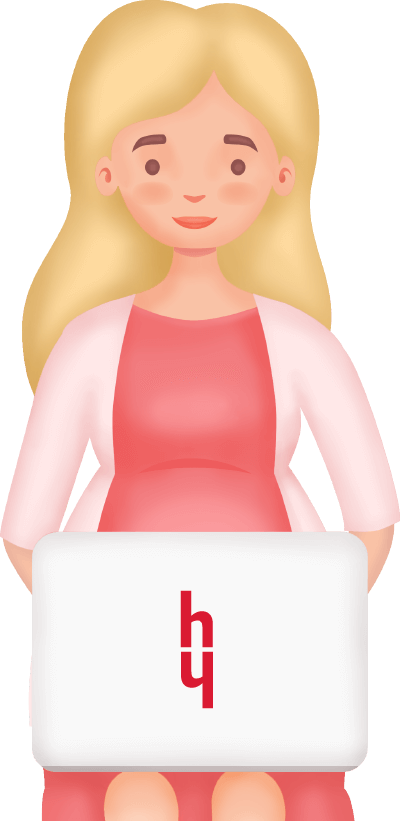Healthcord Webinar Series
An introduction to stem cells
Duration
3:45 minutes
Category
Stem cell basics
Series
Cord blood banking
Objective
Educational
What you will learn
- What are stem cells?
- Diseases currently treated with stem cell therapy
- Difference between cord blood and cord tissue stem cells
- Clinical trails exploring the future potential of stem cells
An introduction to stem cells
This article focuses on stem cells, their uses and how scientists are exploring their potential to treat many different diseases.
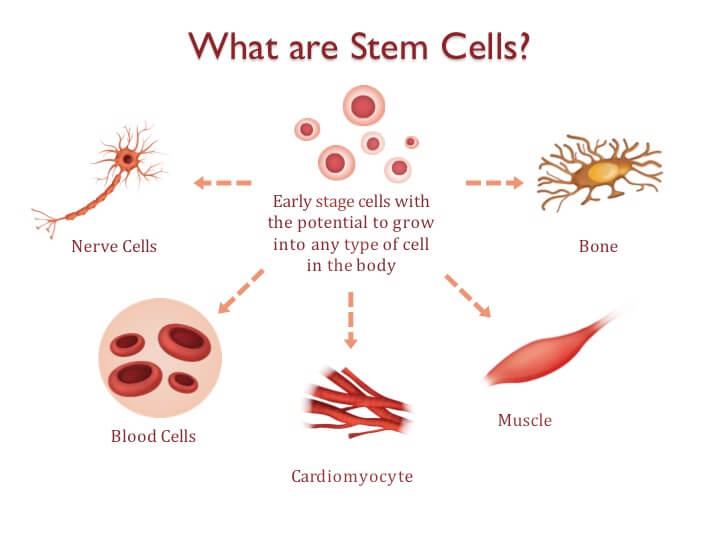 Stem cells are unique, early-stage cells with the ability to develop into various cell types within the body. Two primary sources of newborn stem cells are cord blood and cord tissue.
Stem cells are unique, early-stage cells with the ability to develop into various cell types within the body. Two primary sources of newborn stem cells are cord blood and cord tissue.
Cord blood is rich in hematopoietic stem cells, which can transform into different blood cells. These stem cells are also found in adult bone marrow.
Cord tissue contains a different type of stem cell known as mesenchymal stem cells, which have the ability to develop into bone, muscle, cartilage, and nerve cells.
Together cord blood and cord tissue contain two different kinds of stem cells that can be used to grow many different cell types in the body.
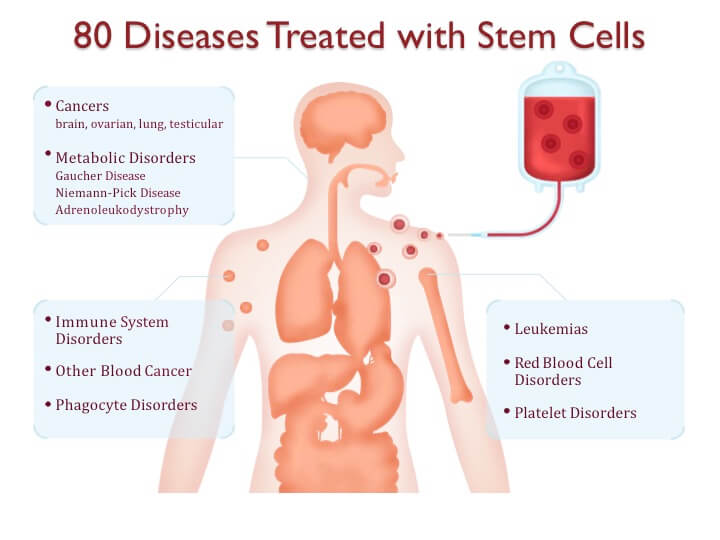 Hematopoietic stem cells have been used to treat diseases for more than 60 years. The very first stem cell transplant was performed in 1957, more than 60 years ago by E. Donnall Thomas. He went on to win the Nobel Prize in 1990 for his discovery of cell transplants as a way to treat human diseases.
Hematopoietic stem cells have been used to treat diseases for more than 60 years. The very first stem cell transplant was performed in 1957, more than 60 years ago by E. Donnall Thomas. He went on to win the Nobel Prize in 1990 for his discovery of cell transplants as a way to treat human diseases.
Today, hematopoietic stem cells are used to treat over 80 life-threatening diseases such as cancers, immune system disorders, blood disorders and metabolic disorders.
Stem cell research is one of the fastest-growing areas of research. Currently, there are over 1000 clinical trials exploring the use of both cord blood and cord tissue stem cells to treat diseases like osteoporosis, Alzheimer’s, diabetes, breast cancer, liver failure and arthritis.
Tremendous amount of growth has observed over the years in terms of clinical trials from 2004 to 2018.
When we look at trials involving mesenchymal stem cells (one type of stem cells found in cord tissue) between 2005 and 2015, the number of trials has increased by 10-fold.
When these trials are broken down by stem cell type and transplant type, both types of transplants are being equally explored.
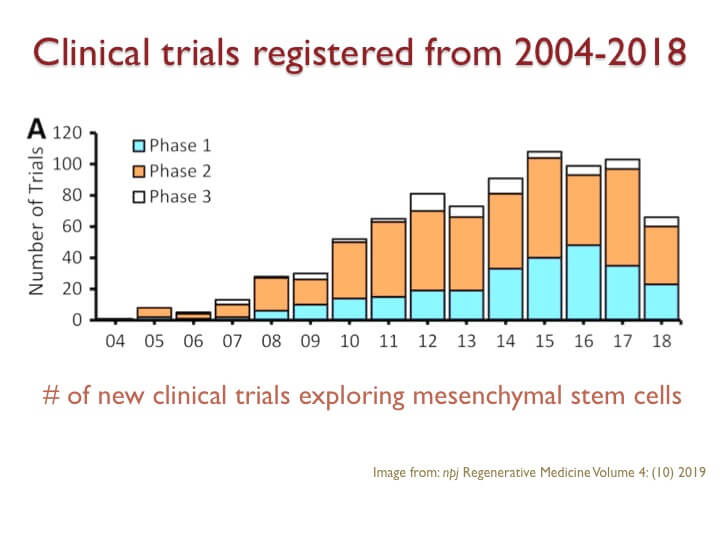 What is more interesting is what the data shows in terms of stem cell types. Umbilical cord stem cells are the second largest category being explored for their potential as a future therapeutic.
What is more interesting is what the data shows in terms of stem cell types. Umbilical cord stem cells are the second largest category being explored for their potential as a future therapeutic.More topics you might like
Continue your journey by selecting another topic.
Discover more about the placenta, cord blood and cord tissue.
4:00 minutes | Stem cell basics
Understand the different types of stem cell transplants.
5:30 minutes | Stem cell basics
Learn about the exciting new ways stem cells are being explored as a future therapeutic.
5 minutes | Stem cell basics
A Precious Gift of a Lifetime
Registering for stem cell banking takes only a few minutes.
A Precious Gift of a Lifetime
Registering for stem cell banking takes only a few minutes.



